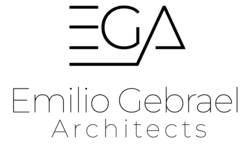Our Services
-
Construction Administration
-
Post-Occupancy Evaluation
-
Project Management
-
Feasibility Studies
-
Permitting and Approvals
-
Construction Documents
-
Bidding and Negotiation
-
Conceptual Design
Collaborative, innovative, and sustainable architectural design solutions for a better world.

Architectural Renovation: Enhancing the Past for the Future
Building renovation in architecture focuses on updating and improving existing structures to meet contemporary standards, enhance functionality, and preserve historical value. This comprehensive process includes structural repairs, modernizing systems like HVAC and electrical, boosting energy efficiency, and refreshing interiors for aesthetic appeal. Architectural renovation aims to extend the lifespan of buildings, adapt them to current needs, and often incorporates sustainable practices to minimize environmental impact. By blending modern technology with respect for original design, renovations can rejuvenate spaces while retaining their unique character and significance.
Sustainable Practices in Architectural Renovation
Incorporating sustainable practices in architectural renovation is increasingly vital to minimizing environmental impact. Key strategies include using eco-friendly materials, improving insulation, and installing energy-efficient windows and appliances. Additionally, integrating renewable energy sources such as solar panels and utilizing water-saving fixtures contribute to a building’s sustainability. These practices not only reduce the carbon footprint of the renovation but also lead to long-term cost savings for building owners. Sustainable renovations ensure that while updating and preserving buildings, we are also protecting and conserving natural resources for future generations.
Enhancing Accessibility Through Renovation
Architectural renovation provides an opportunity to enhance building accessibility, making spaces more inclusive for all users. This includes installing ramps, elevators, and accessible bathrooms to accommodate individuals with disabilities. Widening doorways, improving signage, and ensuring that common areas are navigable are also critical improvements. Incorporating universal design principles, which aim to create environments usable by everyone regardless of age or ability, ensures that renovated buildings are welcoming and functional for all occupants. By prioritizing accessibility in renovations, architects create spaces that are not only compliant with legal standards but also promote inclusivity and equal access.
Expert services for development and construction.
Permitting and Approvals
Permitting and approvals are a critical aspect of the architectural design process, as they ensure that the design meets all applicable codes, regulations, and standardsOverall, the permitting and approvals process is a complex and time-consuming aspect of architectural design. Architectural companies play a critical role in ensuring that their clients’ projects comply with all applicable regulations and requirements and obtain the necessary permits and approvals to proceed with construction. By working with an experienced architectural company, clients can ensure that their projects proceed smoothly and efficiently through the permitting and approvals process.
Construction Documents
Construction documents are a critical aspect of the architectural design process, as they provide detailed information about the design and specifications required for construction. Architectural companies provide a range of services related to construction documentsOverall, construction documents are an essential aspect of the architectural design process, as they provide detailed information required for construction and serve as a communication tool between the design team and the construction team. By working with an experienced architectural company, clients can ensure that their construction documents are accurate, detailed, and meet all applicable regulations and requirements.
Bidding and Negoatiation
Bidding and negotiation are important services provided by architectural companies to help clients obtain the best value for their construction projects. These services involve soliciting bids from potential contractors and negotiating contracts to ensure that the project is completed within budget and on timeOverall, bidding and negotiation services provided by architectural companies are essential to ensure that clients obtain the best value for their construction projects. By working with an experienced architectural company, clients can ensure that they receive competitive bids from qualified contractors and negotiate contracts that meet their needs and budget requirements.
“Meet the team behind the designs”
“Our team is comprised of experienced architects, designers, and project managers who share a common goal of creating exceptional spaces.

Alisson Taylor
Team Manager
Emilio Gebrael
CEO
Linda Cooper
CTO




